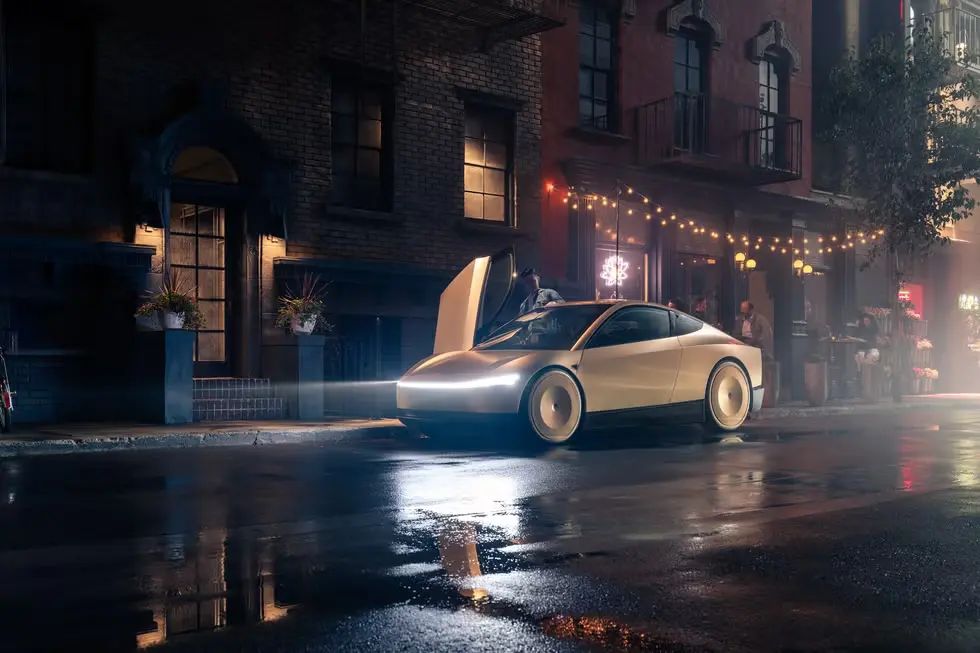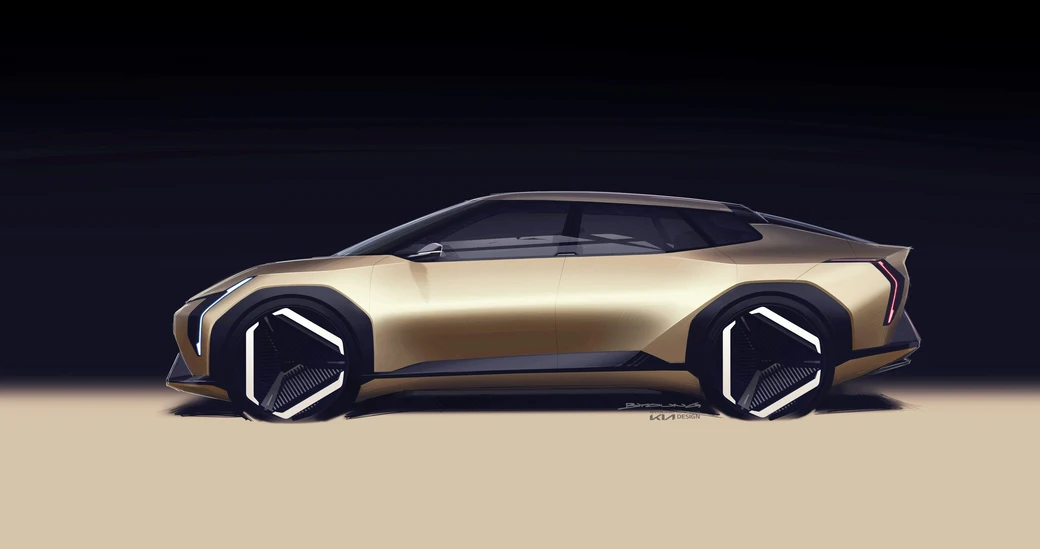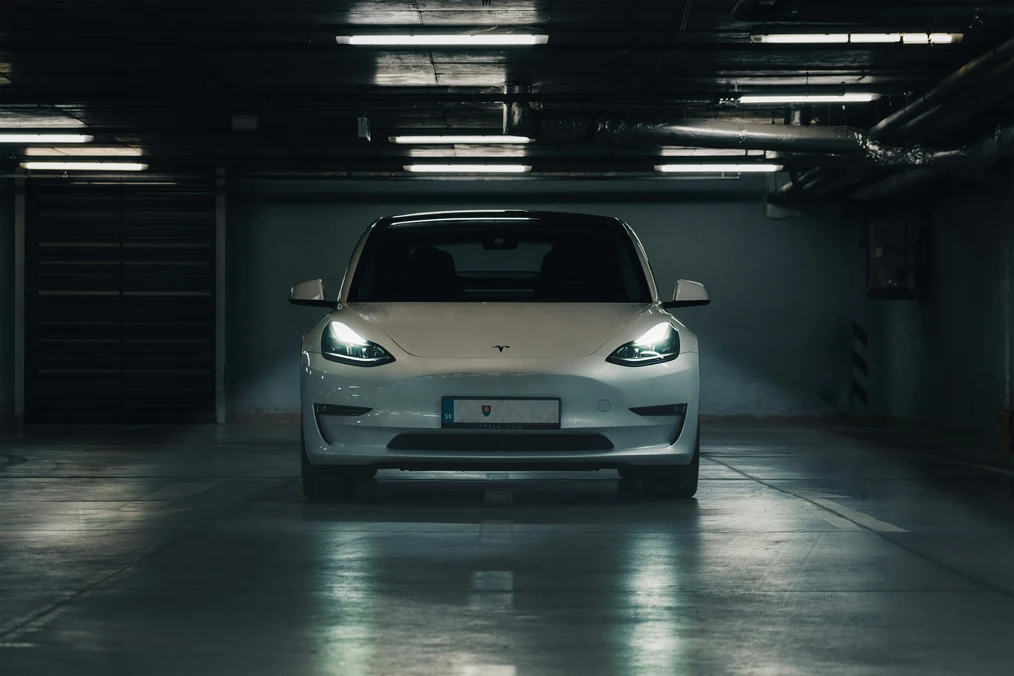The Tesla robotaxi is set to transform the world of transportation, promising an eco-friendly, fully autonomous solution for daily commuting. Combining Tesla’s Full Self-Driving (FSD) software with the company’s commitment to sustainability, the robotaxi is more than just a vehicle—it’s a glimpse into the future of smart living and green commuting. But how does it really work, and why is everyone talking about it? In this blog, we break down everything you need to know, provide insider insights, and explore the tech that makes Tesla’s robotaxi a game changer.

What is the Tesla Robotaxi?
The Tesla robotaxi is a driverless, fully autonomous electric vehicle (EV) designed to function as both a ride-sharing option and a personal vehicle. Unlike other Tesla models, the robotaxi has no steering wheel or pedals, which is a bold leap toward a future where passengers are only required to set a destination. Tesla’s Full Self-Driving (FSD) software is at the heart of the robotaxi, enabling it to navigate urban streets, highways, and even parking lots with zero human intervention.
The robotaxi’s design draws inspiration from Tesla’s Cybertruck, with its sleek lines, butterfly doors, and futuristic, minimalist interior. At the recent We, Robot event, Tesla CEO Elon Musk described the robotaxi as a “vehicle for the future,” offering affordable ride-sharing without the need for a human driver.
How the Tesla Robotaxi Redefines Sustainable Commuting
Tesla has always been at the forefront of green technology, and the robotaxi is a testament to this. By utilizing clean energy, the robotaxi reduces the carbon footprint of urban transportation while also optimizing energy consumption through autonomous route planning. Here’s how it supports sustainable commuting:
- Zero Emissions: The robotaxi is fully electric, meaning it emits no harmful pollutants—a critical feature for reducing urban air pollution.
- Efficiency: Autonomous driving technology enables the vehicle to optimize routes in real time, reducing traffic congestion and energy use.
- Shared Economy: The robotaxi is designed with ride-sharing in mind. Owners can lend their vehicles to Tesla’s network, reducing the number of cars on the road and making transportation more accessible.
In comparison to competing autonomous services like Waymo and Cruise, Tesla’s robotaxi aims to offer a more seamless integration with Tesla’s existing EV lineup and promises better autonomy in more varied environments.
Tesla Robotaxi Event Insights
The recent Tesla Robotaxi Event, part of the We, Robot showcase, offered a sneak peek into the vehicle’s full capabilities. Held at Warner Brothers’ studio lot, the event highlighted Tesla’s plan to start production of the robotaxi by 2025. One of the key announcements was Tesla’s integration of its Optimus robot with the robotaxi platform, allowing for even more advanced autonomous decision-making.
Additionally, the robotaxi was unveiled alongside the Tesla Robovan, a 20-seat autonomous electric van designed for public transportation and cargo. Tesla continues to push the boundaries of autonomous driving by aiming to reduce ride-sharing costs by over 50% compared to traditional services like Uber or Lyft.
Key Features of Tesla Robotaxi
- Full Self-Driving (FSD) Integration: The Tesla robotaxi runs entirely on Tesla’s FSD software, which uses AI and cameras to navigate roads without human intervention.
- Zero Emissions: As an all-electric vehicle, the robotaxi is part of Tesla’s mission to promote sustainability.
- No Steering Wheel or Pedals: This vehicle is designed for the future, with a complete focus on autonomy, providing more passenger space.
- Cybertruck-inspired Design: The robotaxi features a minimalist, futuristic look, with butterfly doors and a spacious interior.
- AI and Real-Time Updates: The integration of Tesla’s Optimus robot provides real-time data on traffic and environmental conditions, optimizing route planning for efficiency.

Why Tesla’s Robotaxi Matters in Smart Cities
Autonomous vehicles are a vital part of smart cities, and the Tesla robotaxi could play a pivotal role in improving urban transportation. With its focus on sustainability and efficiency, the robotaxi can help cities reduce emissions, lower congestion, and streamline commuting. As smart cities evolve, Tesla’s robotaxi will likely be at the forefront of green, autonomous solutions that balance technology with environmental responsibility.
FAQs About Tesla Robotaxi
What is the Tesla robotaxi and how does it work?
The Tesla robotaxi is a fully autonomous electric vehicle that operates without a human driver, utilizing Tesla’s Full Self-Driving (FSD) software.
When is the Tesla robotaxi event?
The Tesla Robotaxi was unveiled at the We, Robot event on October 10, 2024.
How much will the Tesla robotaxi cost?
Early estimates suggest the Tesla robotaxi will start around $30,000.
What makes the Tesla robotaxi different from regular taxis?
Unlike regular taxis, the Tesla robotaxi is fully autonomous and emits zero emissions, making it a more efficient and eco-friendly alternative.
Is the Tesla robotaxi fully autonomous?
Yes, it operates entirely on Tesla’s FSD software, requiring no human intervention.
When will Tesla’s robotaxi be available to the public?
Tesla aims for the robotaxi to hit public roads by 2025, pending regulatory approvals.
Can the Tesla robotaxi be used for ride-sharing?
Yes, Tesla plans to integrate the robotaxi into its ride-sharing network, allowing owners to make money by lending their vehicles.
How does Tesla’s self-driving software compare to Waymo?
Tesla’s FSD uses vision-based AI, while Waymo relies on LiDAR. Both have unique advantages, but Tesla’s system aims for broader use across varied environments.
What are the environmental benefits of Tesla’s robotaxi?
The robotaxi produces zero emissions, reducing the environmental impact of commuting.
What is the expected range of the Tesla robotaxi?
Tesla’s robotaxi is expected to have a range of 300-400 miles on a full charge.
How fast is the Tesla robotaxi?
The robotaxi can reach speeds of up to 120 mph, depending on road conditions.
Will Tesla robotaxi owners be able to make money with it?
Yes, Tesla robotaxi owners can join the ride-sharing program and earn income through the Tesla network.
What are the challenges Tesla faces with the robotaxi rollout?
Regulatory approvals, safety concerns, and building the necessary infrastructure are Tesla’s biggest challenges.
How does the robotaxi contribute to sustainable commuting?
With zero emissions and autonomous efficiency, the robotaxi helps reduce congestion and energy use, promoting eco-friendly commuting.
Will Tesla robotaxis replace traditional taxis?
While traditional taxis may continue to operate, Tesla robotaxis could significantly reduce demand for human-driven vehicles.
How does the robotaxi integrate with Tesla’s AI technologies?
The robotaxi is equipped with Tesla’s Optimus robot and AI systems to enhance its autonomous capabilities.
What safety measures are in place for the Tesla robotaxi?
Tesla’s robotaxi uses AI to monitor road conditions, and there are redundancies built into the system to prevent accidents.
When will the Tesla robotaxi launch?
Tesla plans to launch the robotaxi by 2025.
How does Tesla’s robotaxi fit into the future of smart cities?
It helps reduce traffic congestion and pollution, making it a critical component of smart city infrastructure.
Is Tesla offering incentives for robotaxi owners?
Although no official incentives have been announced, owners can earn money by lending their robotaxi through Tesla’s network.
Tesla Robotaxi and the Future of Commuting
Tesla’s robotaxi is more than just another autonomous vehicle—it’s a bold step toward smarter, greener cities. With full self-driving technology, zero emissions, and an affordable price point, the robotaxi will revolutionize commuting for generations to come. Whether you’re interested in autonomous driving, environmental sustainability, or just the latest tech, the Tesla robotaxi is a vehicle you need to keep on your radar.
Interested in learning more about smart living solutions? Check out the Living Spaces category on Designs24hr’s On The Road for more insights into how technology is shaping the future of everyday life.







